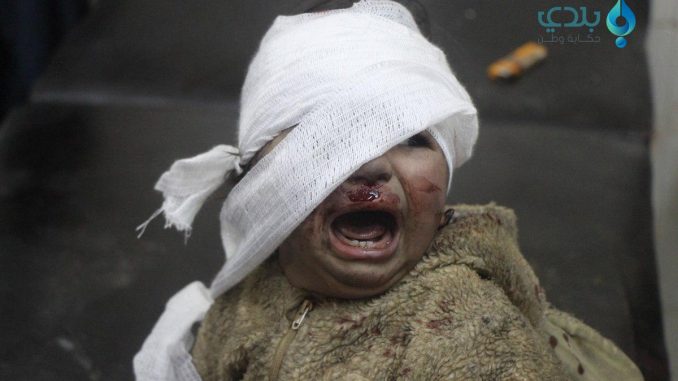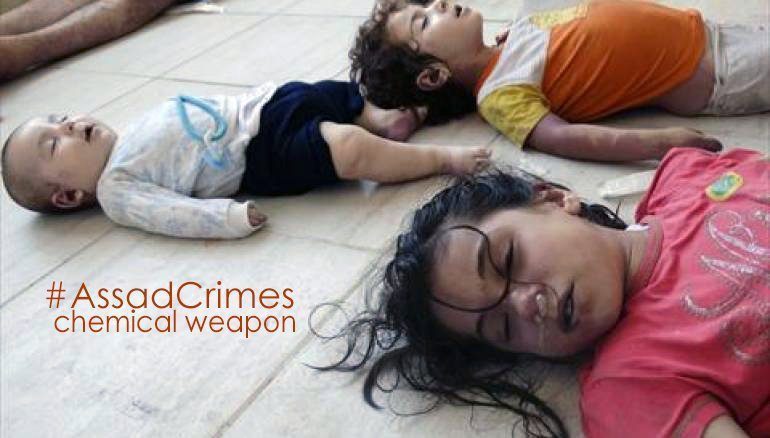
Assad regime forces bombarded several rebel-held areas in Homs, Damascus, and Deraa in the past days, in a clear breach of the Syria truce agreement and escalation before the upcoming peace talks in Geneva.
The truce was agreed on 22 December 2015, and reassured in the peace talks meeting in Astana when Russia, Turkey and Iran said they will be guarantees of it to prepare a suitable environment for a political solution.
However, the repeated breaches by Assad regime and targeting the rebel-held areas give a direct indication about Assad regime’s disrespect for these agreements.
Damascus
On Damascus’s northeastern outskirts, Assad regime forces attacked the rebel-held Qaboun and Barzeh districts with rockets and shells and killed at least nine people, the British-based Syrian Observatory for Human Rights monitoring group said.
According to the Observatory, the regime forces launched more than 7 missiles believed to be ground-to-ground and several shells on areas in Qaboun neighborhood, and the death toll is expected to rise because there are about 15 people in a critical situation.
In addition, nineteen civilians were killed by Assad regime’s mortar attacks on a funeral procession in the western parts of Harasta, near the outskirts al-Qaboon neighborhood, as dozens of mourners were heading to bury a killed civilian who lost his life by Assad attacks on al-Qaboon neighborhood earlier on Saturday, Orient News correspondent Hadi al-Munajed said.
The Observatory also reported that the regime forces brought military reinforcements to the checkpoints in the vicinity of Barzeh and to their sites in the eastern outskirts of Damascus.
Dozens of families started fleeing their homes in Harasta to Damascus eastern countryside as a result of this incident and the previous targeting of Qaboun neighborhood.
Nothing new for the UN or world community to worry about.
Just the usual death & destruction by Assad, Putin & Iran’s mullahs. #Syria pic.twitter.com/0s9F07XIuT— شبكة الثورة السورية (@RevolutionSyria) February 19, 2017
جرحى نتيجة قصف قوات النظام بصواريخ الفيل حي القابون بمدينة دمشق اليوم#Qaboun #Damascus #Syria 18-02-2017#PutinAssadCrimes pic.twitter.com/yFG2mzCWja
— شبكة الثورة السورية (@RevolutionSyria) February 18, 2017
Homs
Assad regime’s warplanes bombarded the last rebel-held district of Homs, al-Waer, killing at least two people and raising the death toll from nearly two weeks of air strikes there to more than 30 including 10 children and 3 women, an activist and the Observatory said.
A military media unit run by Damascus’s ally Hezbollah said insurgents in al-Waer had been attacked by warplanes and artillery after rebel sniper fire hit neighboring areas.
Al-Waer has for months been spared the intense bombardment by Assad and Russian air forces, but the resumption of it may be an indication to the regime’s dedication to end the district’s issue.
Assad regime has tried to conclude a deal in al-Waer that would see rebel fighters and their families evacuate the district and the regime take over. Under similar local agreements in other parts of western Syria, rebels have left with light weapons and headed mostly for Idlib.
Assad said on Wednesday that local reconciliation agreements were the “most effective way to end the war and move towards a political solution,” state news agency SANA reported.
In September some 120 rebel fighters and their families left al-Waer in agreement with the regime, but there have been no further reports of insurgents leaving the area. The Observatory estimates several thousand rebels remain in the district.
The opposition says such agreements are part of the regime’s strategy “surrender or die” aiming at forcibly displacing populations from opposition-held areas after years of siege and bombardment, and gathering them in one place, preparing for a final blow against the rebels and the revolution.
Deraa
In the southern province of Deraa, Assad regime’s and Russian warplanes stepped up their bombardment of rebel-held areas, carrying out at least 70 air strikes on Friday and Saturday, on Deraa city and towns to the east, the Observatory reported.
At least four people were killed in the town of Umm al-Mayadhin, and one person in Busra al-Sham, it said.
Russian jets started targeting rebel-held areas of Deraa for two days after Syrian opposition groups on Sunday stormed the heavily garrisoned Manshiya district in a campaign that sought to obstruct any army attempts to capture a strategic border crossing with Jordan from the opposition.
A rebel source said that there were at least 30 Russian sorties on Tuesday, thwarting further rebel gains in the heavily defended enclave that had allowed them so far to secure significant parts of the Manshiya.
“When the regime began to lose control of some areas … the Russian jets began their operations,” said Ibrahim Abdullah, a senior rebel commander.
The Free Local Council in #Daraa declares opposition neighbourhoods as disaster areas due to Russian-Assad intense air strikes. #Syria pic.twitter.com/NmAZFUiVqn
— شبكة الثورة السورية (@RevolutionSyria) February 19, 2017
– نبأ
مشاهد من اللحظات الاولى لغارات المقاتلات الروسية التي استهدفت بشكل عنيف الأحياء المحررة في مدينة درعا#Daraa #Syria #RussianTerror pic.twitter.com/DVEW54Bi79— شبكة الثورة السورية (@RevolutionSyria) February 18, 2017
The army’s control of the rebel-held crossing and chunks of territory in the southern strip of Deraa would sever the rebel link between the eastern and west parts of the province.
The Assad regime’s army said the “terrorists” had failed to make gains and its troops had inflicted many casualties.
The opposition fighters are drawn from both moderate Free Syrian Army groups and members of a newly formed alliance – Tahrir al-Sham.
The fighting spread across other parts of Deraa as rebels fired mortars on regime-controlled parts of the province.
Ground-to-ground missiles were also deployed from army barracks to hit rebel-held quarters of Deraa, residents said.
The battles inside the city are the most intense since an alliance of mainstream rebels, known as the Southern Front, who are backed by western and Arab foes of President Bashar al-Assad, launched an unsuccessful large-scale military campaign to capture the whole city in 2015.
The Assad regime forces has so far failed to recapture the border crossing, a once thriving passenger and commercial gateway with Jordan, despite repeated efforts.
At least half of the southern province is in the hands of FSA fighters but groups affiliated with the Islamic State (ISIS) have a foothold in an area to the west of Deraa in the Wadi Yarmouk area, near the Golan Heights.
The Syrian crisis began as a peaceful demonstration against the injustice in Syria. Assad regime used to fire power and violence against the civilians and led to armed resistance. 450.000 Syrians lost their lives in the past five years according to UN estimates, and more than 12 million have lost their homes.



